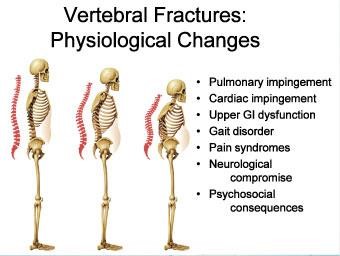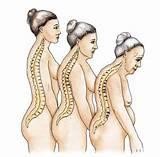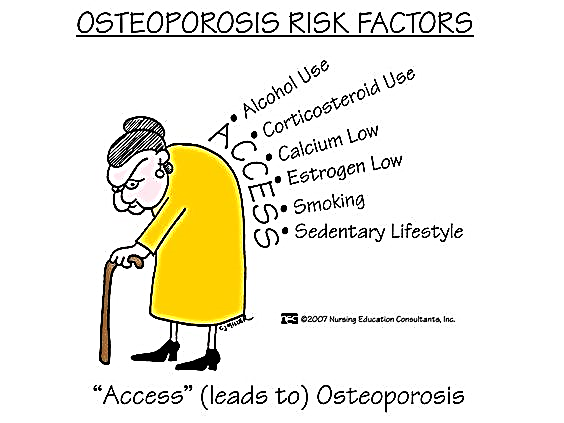- Decrease in the bone mass and density with a change in bone structure.
- May be ASYMPTOMATIC until the bones become fragile and a minor injury or movement causes a fracture.
- A disease of the bone characterized by a decrease in the bone mass and density with a change in bone structure
- METABOLIC BONE DISORDERS
- Osteoporosis is a metabolic bone disease that involves an imbalance between new bone formation and bone resorption.
Primary osteoporosis is the most common type; occurs most often in women after menopause because low levels of estrogen are associated with an increase in bone resorption.
Bone loss occurs predominantly in the vertebral bodies of the spine, the femoral neck in the hip, and the distal radius of the arm. Bone mass declines, leaving the bones brittle and weak.
PATHOPHYSIOLOGY
- Normal homeostatic bone turnover is altered rate of bone RESORPTION is greater than bone FORMATION reduction in total bone mass reduction in bone mineral density prone to FRACTURE.
Low bone mass/
impaired bone quality
Inadequate peak bone mass
Early menopausal bone loss
Decrease in bone mass/bone quality

Calcium/
vitamin D deficiency
Other
factors
Fractures

TYPES:
Primary
-
- advanced age
- post-menopausal
Secondary
-
- Steroids use
- will inhibit formation of bones
- decrease absorption of Calcium
- increase urine Calcium loss
 Alcohol overuse
Alcohol overuse
- Renal failure
- Steroids use
RISK FACTORS
- Sedentary lifestyle
- Age
- Diet: caffeine, alcohol, low Calcium and Vitamin D
- Post-menopausal
- Genetics : Caucasian and Asian
 Immobility
Immobility
“FAST ACCESS”
- Family history of osteoporosis
- Age
- Surgical menopause following hysterectomy with or without oophorectomy
- Thyrotoxicity
- Alcohol
- Corticosteroids
- Calcium deficiancy (low intake)
- Eostrogen deficiency
- Smoking
- Sedentary Lifestyle
ASSESSMENT FINDINGS
- Low stature (stooping)
- Fracture (usually long bones)
- Bone pain
LABORATORY FINDINGS
- DEXA-scan
- Provides information about bone mineral density
T-score is at least 2.5 SD below the young adult mean value
- X-ray studies
MEDICAL MANAGEMENT
- Diet therapy with Calcium and Vitamin D.
- Hormone replacement therapy.
- Moderate weight bearing exercise.
- Management of fractures.
- Medications.
-
- Calcium supplements: daily intake of calcium should be approximately 1000 mg for men and 1500 mg for postmenopausal women.
- Vitamin D supplements (800 to 1000 IU recommended daily for postmenopausal women and older adults) to enhance utilization of calcium; spending 20 minutes daily in the sun will provide adequate vitamin D.
-
- Surgical
- Kyphoplasty
- Balloon creates a cavity in vertebral body in which to inject cement
- Restores vertebral body height in 70%
- Reduces fracture
- Partially corrects kyphosis
- Vertebroplasty
- Fluoroscopic procedure where cement is injected into vertebral body
- Prevents further collapse, does not restore height
- Pain relief within 48 hours generally, effective in 75-90%
NURSING INTERVENTIONS
- Promote understanding of osteoporosis and the treatment regimen.
- Provide adequate dietary supplement of Calcium and Vitamin D.
- Instruct to employ a regular program of moderate exercises and physical activity.
- Manage the constipating side effect of Calcium supplements.
- Take Calcium supplements with meals.
- Avoid alcohol and coffee if under Calcium Therapy.
- Instruct on intake of hormonal replacement.
- Other medications:
- Selective Estrogen Receptor Modulators [SERMs] (Evista)
- Drugs that block the naturally circulating estrogen in breast tissues and other estrogensensitive tissues in the body.
Alendrolate sodium
- A synthetic drug analog of pyrophosphate that acts primarily on bone to inhibit its resorption and is used to treat and prevent osteoporosis in postmenopausal women.
- Used together with vitamin D.
Calcitonin
- Relieve pain.
- Suggest that knee flexion will cause relaxation of back muscles.
- Heat application may provide comfort.
- Encourage good posture and body mechanics.
- Instruct to avoid twisting and heavy lifting.
- Improve bowel elimination.
- Constipation is a problem of Calcium supplements and immobility.
- Advise intake of high fiber diet and increase fluids.
- Prevent injury.
- Instruct to use isometric exercise to strengthen the trunk muscles.
- Avoid sudden bending strenuous lifting.
 Provide a safe environment.
Provide a safe environment.
